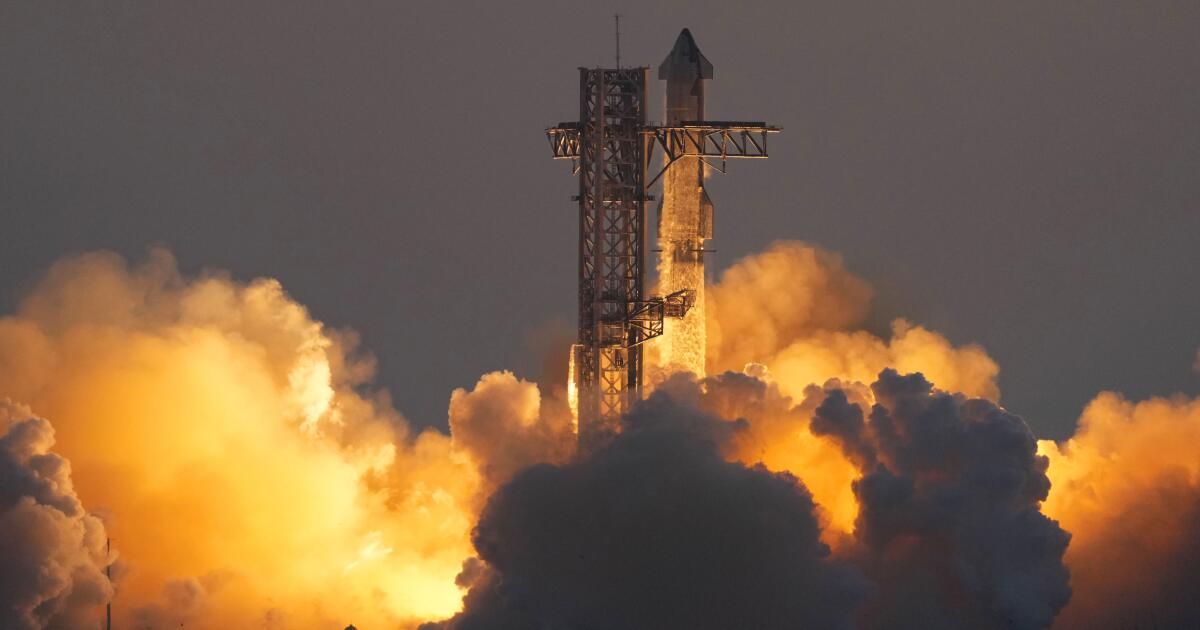SpaceX conducted its boldest test flight yet of the massive Starship rocket on Sunday, trapping the returning booster on the launch pad with mechanical arms.
Soaring nearly 400 feet, the empty Starship took off at dawn from the southern tip of Texas, near the Mexican border. It arced over the Gulf of Mexico like the four previous Starships that ended up being destroyed, either shortly after takeoff or while plunging into the sea. The last of June was the most successful yet and completed its flight without exploding.
This time, SpaceX founder and CEO Elon Musk upped the challenge and risk. The company brought the first stage booster to land on the pad from which it had taken off seven minutes earlier. The launch tower sported monstrous metal arms, called sticks, that caught the 232-foot descending thruster.
“The tower has caught the rocket!!” Musk announced through X. “Science fiction without the fiction part.”
Company employees shouted with joy, jumping and pumping their fists in the air as the booster slowly descended toward the arms of the launch tower.
“Even today, what we just saw is magical,” SpaceX's Dan Huot observed from near the launch site. “I'm shaking right now.”
“Folks, this is a day for the engineering history books,” added SpaceX's Kate Tice from SpaceX headquarters in Hawthorne.
An hour later, the empty spacecraft that was launched on the booster made a controlled landing in the Indian Ocean as planned, contributing to the day's success.
It was up to the flight director to decide, in real time with a manual control, whether to attempt the landing. SpaceX said both the booster and launch tower must be in good and stable condition. Otherwise, it was going to end up in the Gulf like the previous ones. Everything was considered ready for capture.
The retro-looking stainless steel spacecraft on top continued to circle the globe once it was free of the booster. Cameras on a buoy in the Indian Ocean showed flames erupting from the water when the propellant hit precisely the target location. It was not intended to be recovered for this demonstration.
“What a day,” Huot said. “Let's get ready for the next one.”
The June flight fell short at the end because pieces came off. SpaceX updated the software and modified the heat shield, improving the thermal plates.
SpaceX has been recovering the first-stage boosters from its smaller Falcon 9 rockets for nine years, after delivering satellites and crews to orbit from Florida or California. But they land on floating ocean platforms or concrete slabs several kilometers from their launch pads, not them.
Recycling Falcon boosters has accelerated launch speed and saved SpaceX millions. Musk intends to do the same with Starship, the largest and most powerful rocket ever built with 33 methane-fuel engines in the booster alone. NASA has ordered two Starships to take astronauts to the moon later this decade. SpaceX intends to use Starship to send people and supplies to the Moon and, eventually, Mars.
Dunn writes for the Associated Press.












